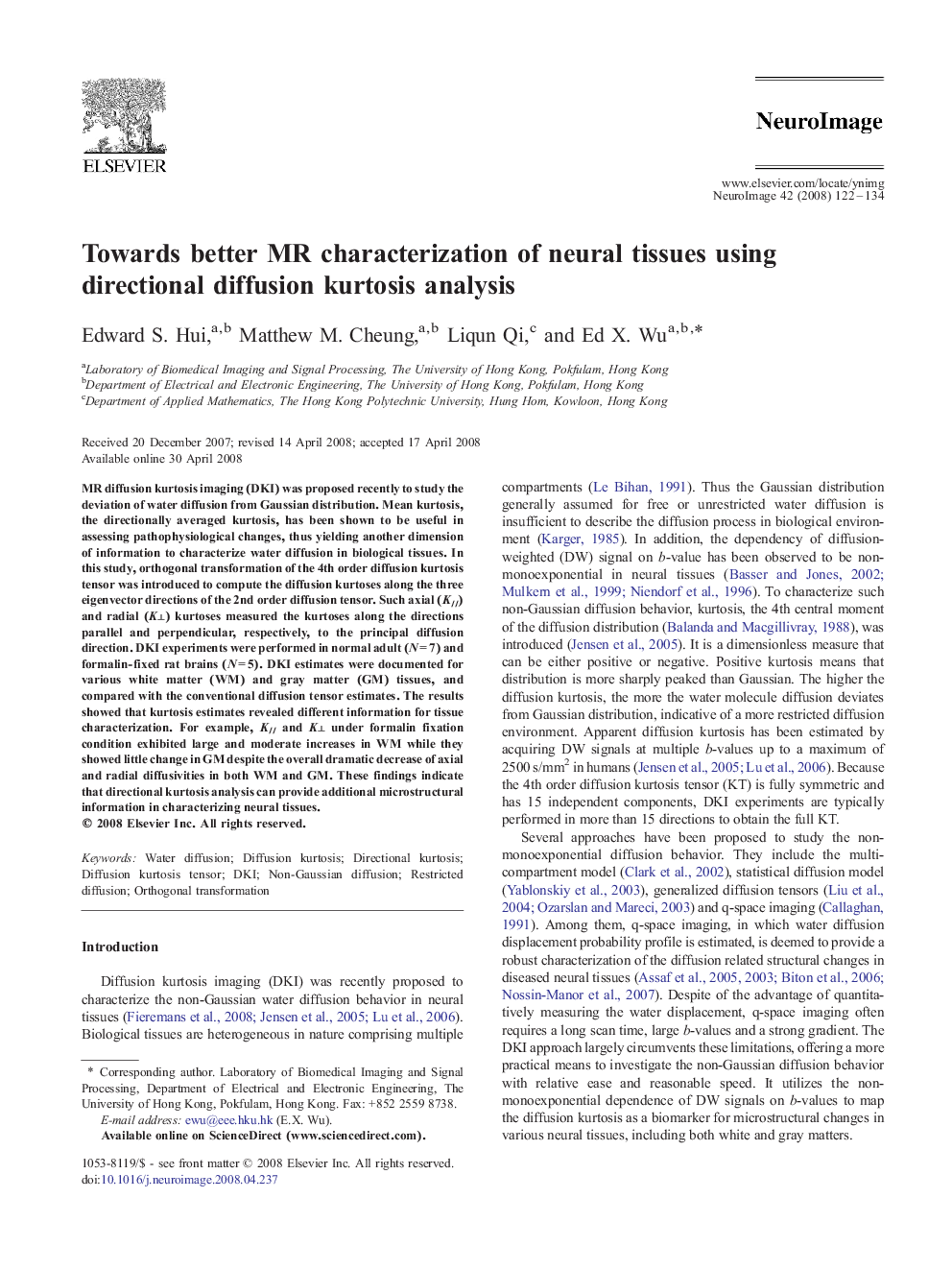| Article ID | Journal | Published Year | Pages | File Type |
|---|---|---|---|---|
| 3073018 | NeuroImage | 2008 | 13 Pages |
MR diffusion kurtosis imaging (DKI) was proposed recently to study the deviation of water diffusion from Gaussian distribution. Mean kurtosis, the directionally averaged kurtosis, has been shown to be useful in assessing pathophysiological changes, thus yielding another dimension of information to characterize water diffusion in biological tissues. In this study, orthogonal transformation of the 4th order diffusion kurtosis tensor was introduced to compute the diffusion kurtoses along the three eigenvector directions of the 2nd order diffusion tensor. Such axial (K//) and radial (K┴) kurtoses measured the kurtoses along the directions parallel and perpendicular, respectively, to the principal diffusion direction. DKI experiments were performed in normal adult (N = 7) and formalin-fixed rat brains (N = 5). DKI estimates were documented for various white matter (WM) and gray matter (GM) tissues, and compared with the conventional diffusion tensor estimates. The results showed that kurtosis estimates revealed different information for tissue characterization. For example, K// and K┴ under formalin fixation condition exhibited large and moderate increases in WM while they showed little change in GM despite the overall dramatic decrease of axial and radial diffusivities in both WM and GM. These findings indicate that directional kurtosis analysis can provide additional microstructural information in characterizing neural tissues.
